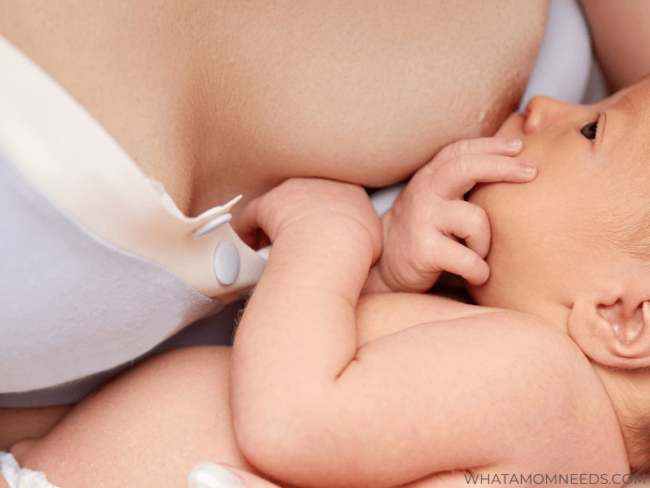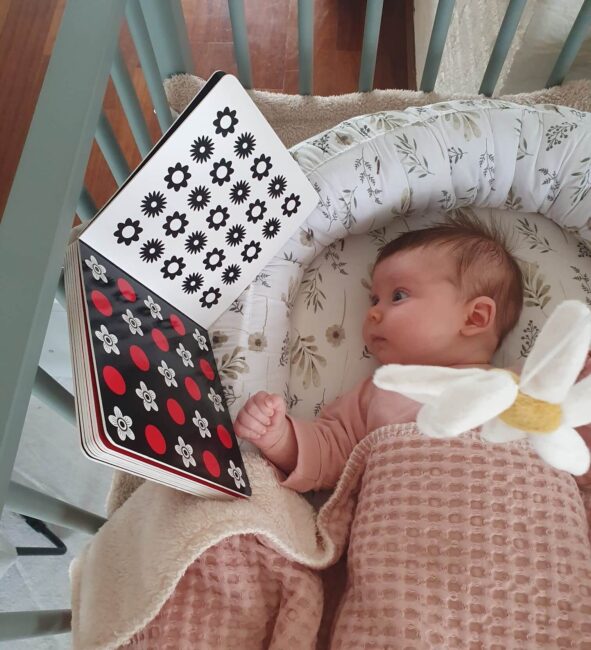Why Do Babies Move Their Arms And Legs While Sleeping?
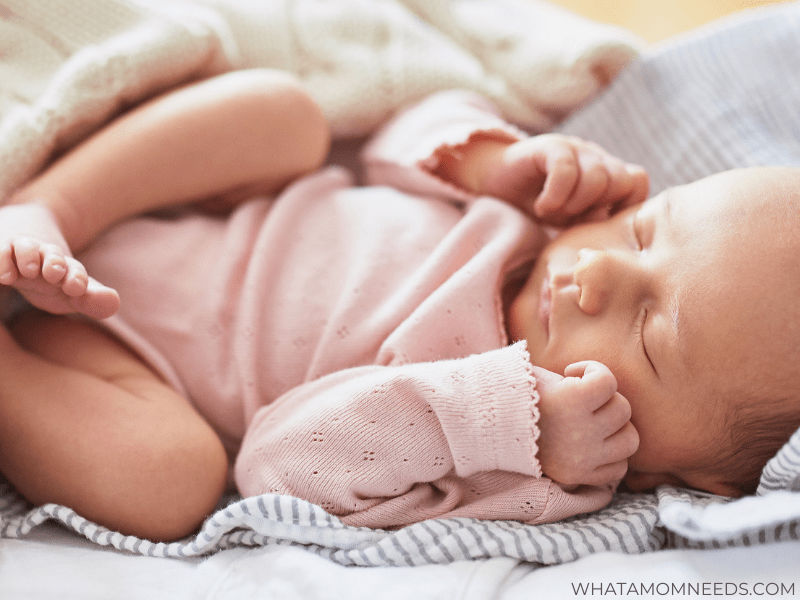
Have you ever wondered why babies move their arms and legs so much while sleeping?
One reason for all that adorable squirming and twitching is your baby’s active sleep phase. Just like adults, babies experience rapid eye movement (REM) sleep, which is essential for their development and overall well-being.
During this phase, their brains are active, and their bodies may react to the dreams they’re having. (After the REM phase, your baby will go into the deep sleep phase, where your baby is less active).
Another factor that contributes to your baby’s movements could be the Moro reflex, also known as the startle reflex. Babies are born with this reflex as a way to protect themselves. Newborn babies can’t control their movements yet, so when they feel like they’re falling or unsupported, their arms shoot out and their legs kick in response. It may seem like they’re having an active dream or practicing for the Olympics, but it’s just their tiny bodies reacting instinctively and causing them to flail their arms and legs.
Around 4-6 months of age, you might notice even more movement as your baby’s nervous system matures and they develop new skills. These movements are a normal part of their sleep cycle and usually indicate healthy brain activity.
So next time you find yourself awake in the middle of the night watching your little baby constantly moving arms and legs while sleeping, remember that it’s all part of their natural sleep cycle as they grow and learn!
The arm and leg movements are actually good for babies!
For new parents, it’s only natural to be concerned about every little movement they make, especially when they’re asleep. But did you know that those sweet baby movements during sleep are actually a good sign?
When your baby twitches, jerks, or even smiles in their sleep, it’s a clear indication that their little bodies and brains are developing and growing as they should. These movements are often referred to as “sleep starts” or hypnagogic jerks. They are completely normal and typically occur during the transition from wakefulness to sleep.
Babies have a lot of energy to burn, even in their sleep. Moving their arms and legs helps them develop muscle strength and coordination. Plus, it’s a way for them to explore their bodies and the space around them, even in the dream world.

Some possible reasons for your baby’s restless sleep
Involuntary muscle movements
Between 0-6 months your baby can also experience involuntary muscle movements during sleep, often resulting in quick, jerky motions or subtle twitches. These movements, including neck twitches, are entirely normal and usually harmless.
These twitches are believed to be a natural part of the sleep cycle, more common during light sleep stages. It’s thought to be linked to the developing nervous system in infants.
sleep myoclonus typically fades away as your baby grows. No need to intervene unless the twitches are getting worse or accompanied by other worrying symptoms!
Growth spurts
Restless sleep in babies is a common occurrence and it’s also possible that your baby is experiencing growth spurts!
When your baby is experiencing a growth spurt, their body is working overtime to fuel all that growth. This can lead to increased hunger and discomfort, making it harder for them to settle down and sleep soundly.
Iron Deficiency
When your baby is tossing and turning all night, it can leave you feeling exhausted and frustrated. While there could be various reasons for restless sleep, one potential factor to consider is iron deficiency.
Iron deficiency occurs when the body doesn’t have enough iron to produce hemoglobin, the protein in red blood cells that carries oxygen to tissues. Babies are particularly vulnerable to iron deficiency, as their rapid growth and development increase their iron requirements.
How Does Iron Deficiency Affect Sleep?
Iron deficiency can lead to a range of symptoms that may disrupt your baby’s sleep, including:
- Restlessness and difficulty settling down
- Increased irritability and fussiness
- Frequent night waking
- Shorter sleep duration
- Difficulty maintaining a regular sleep schedule
Tips for Soothing Your Little One’s Restless Sleep Patterns
If your baby’s constant movements are keeping you both up at night, there are a few things you can try to promote better sleep:
I gathered some tips and tricks to ensure you and your active sleeper get the peaceful slumber they need!
Sleep Environment
Create a calm and soothing sleep environment for your baby, with dim lighting, white noise, and a comfortable mattress. Minimize distractions and ensure the room is at a comfortable temperature.
Creating a cozy sleep environment for your little one can make a world of difference in their restful sleep.
A comfortable sleep environment also means minimizing any disruptions that could be causing them to toss and turn. Try reducing loud noise in the house by using a white noise machine or soothing sounds to create a calming atmosphere.
Another tip is to make sure the room is nice and dark. Light can be stimulating for babies and may cause them to have a more restless sleep. Investing in blackout curtains or shades can help create a cozy, dark space for your little one to drift off peacefully.
Lastly, establishing a consistent sleep schedule is key. Babies thrive on routine, so try to stick to regular nap times and bedtime hours. This predictability can help regulate their internal clock and promote better sleep patterns.
Sleep Routine
Establishing a consistent bedtime routine can signal to your baby that it’s time to wind down and prepare for sleep.
A warm bath, gentle massage, soft lullabies, or reading a bedtime story can all help create a calming environment that helps your baby relax.
Avoid exposing your little one to bright light close to bedtime as it can interfere with their natural circadian rhythm. Go for dim lighting during the nighttime routine to signal that it’s sleep time!
Swaddle Sleep Sacks
One way to help your baby sleep and reduce these sudden movements is by using a swaddle or sleep sack. Swaddling mimics the snug environment of the womb, making babies feel safe and secure. It can also prevent them from waking themselves up constantly moving with arms and legs.
When choosing a swaddle or sleep sack for your little one, Go for one that allows some movement for healthy hip development. Remember to always follow safe sleep guidelines and ensure that your baby is placed on their back to reduce the risk of Sudden Infant Death Syndrome (SIDS).
My daughter used to constantly startle herself awake with her own Moro reflex and flailing hands, making it difficult for her to stay asleep. This was frustrating for her and, naturally, for us as well because we couldn’t seem to get her to sleep in her crib. We tried swaddling, but she didn’t like feeling restricted. Then we discovered the Woombie, and it was a game-changer! With the Woombie, she can move her legs freely, and the stretchy fabric allows her arms some movement too, but not enough to wake herself up. It definitely ensured that she could fall asleep more peacefully, and her naps lasted longer. Plus, the sleeping bag meets safety guidelines for safe sleep.
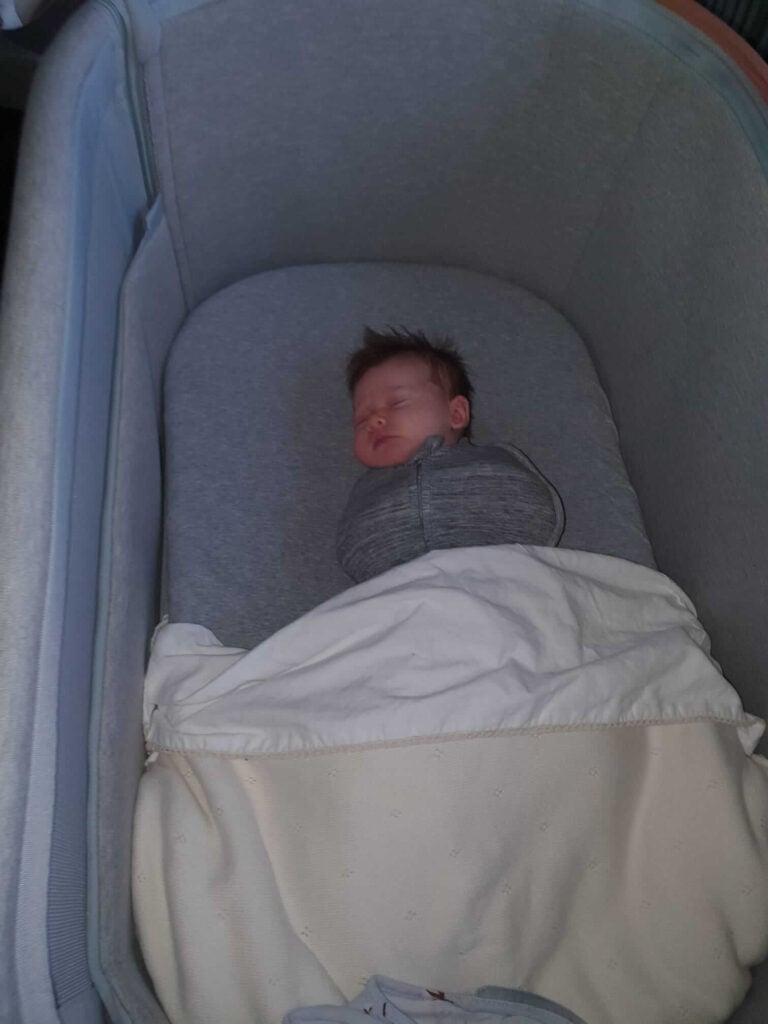
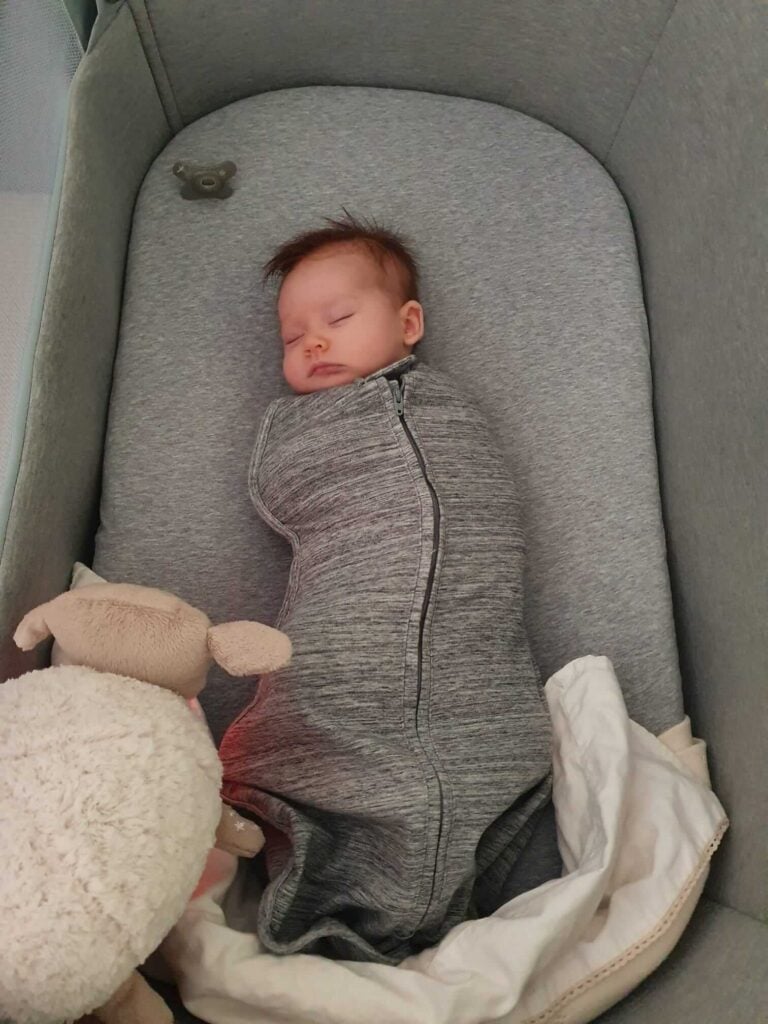
Oh, a sleeping baby is so cute! and especially wrapped like a burrito.
Tummy time
Giving your baby plenty of supervised tummy time during waking hours tires them out, leading to more restful sleep so is a very good idea!
These movements help them strengthen their muscles and improve coordination. Think of it as their way of practicing for all the crawling, walking, and exploring they’ll be doing soon!
When engaging in tummy time with your baby, consider incorporating their favorite toys to make the experience more enjoyable. By placing colorful, textured toys within reach during tummy time, you can stimulate their senses and encourage reaching and grasping movements.
Sleep disorders
In rare cases, excessive movement during sleep can be a symptom of sleep problems like restless leg syndrome, periodic limb movement disorder or sleep apnea. These medical conditions can disrupt your baby’s sleep and may require medical intervention. Keep an eye out for signs like frequent pauses in breathing, gasping for air, or excessive daytime sleepiness.
Restless Leg Syndrome
While it’s normal for babies to move around during sleep, sometimes there’s more to it than just natural movements.
One possible reason for your baby’s restless sleep could be restless legs syndrome (RLS). This condition, also known as Willis-Ekbom disease, can occur in babies as well as adults. RLS is characterized by uncomfortable sensations in the legs, often described as tingling, itching, or a crawling feeling, which leads to an irresistible urge to move the legs.
Imagine experiencing these sensations as an adult, and then think about how challenging it must be for a baby who can’t communicate their discomfort verbally. Instead, they express it through constant movement, kicking, and squirming.
While RLS in babies is less common than in adults, it’s essential to consider it as a potential factor if your baby’s sleep movements seem excessive or disruptive.
Periodic limb movement disorder
Periodic Limb Movement Disorder is a condition where a person involuntarily moves their limbs during sleep. While it’s more commonly seen in adults, it can also affect children. These movements can disrupt your baby’s sleep and lead to daytime drowsiness or irritability.
Sleep apnea
The constant moving could be a sign of sleep apnea. While it’s relatively rare this condition can affect babies too, not just adults.
Sleep apnea is a sleep disorder characterized by pauses in breathing or shallow breathing during sleep. In adults, it’s often associated with snoring and daytime fatigue, but the symptoms can be different in babies.
Babies will be moving around frequently as their body tries to adjust to interrupted breathing.
If you notice your baby moving around a lot during sleep and suspect it might be related to their breathing, it’s essential to consult with your pediatrician. They can help determine if there are any underlying issues with your baby’s nasal passages or if further evaluation for sleep apnea is needed.
As you can see, these sleep disturbances are not common in babies, but they can be a cause of your baby’s excessive movement during sleep and need some medical attention
When to Consult a Pediatrician About Your Baby’s Sleep Movements?
If you’re concerned about your baby constantly moving arms and legs while sleeping or if they seem unusually restless, don’t hesitate to consult with your pediatrician. Pediatricians are not just there for regular check-ups; they are also a great resource when it comes to understanding infant sleep patterns. They can help rule out any underlying issues, provide valuable advice on what signs of discomfort to look out for during your baby’s sleep and offer guidance on how to promote better sleep for your little one.
You may also like these fun and easy pincer-grasp activities for babies
Mostly it’s a normal developing stage!
While it may seem puzzling at first, the constant arm and leg movements during sleep are a natural and healthy part of your baby’s development and there is a lot going on in your baby’s brain. By understanding why babies move during sleep and implementing some simple strategies, you can help ensure your little one gets the rest they need to thrive. And remember, if you ever have concerns about your baby’s sleep, your healthcare provider is there to help guide you every step of the way.
This post was all about: why do babies move their arms and legs while sleeping
I am not a healthcare provider, and this post is for informational purposes only. Always consult your healthcare provider for advice regarding your baby’s health.
If you purchase a product with the links that I provide I may receive a small commission. There is no additional charge to you. View the disclosure for more information.


